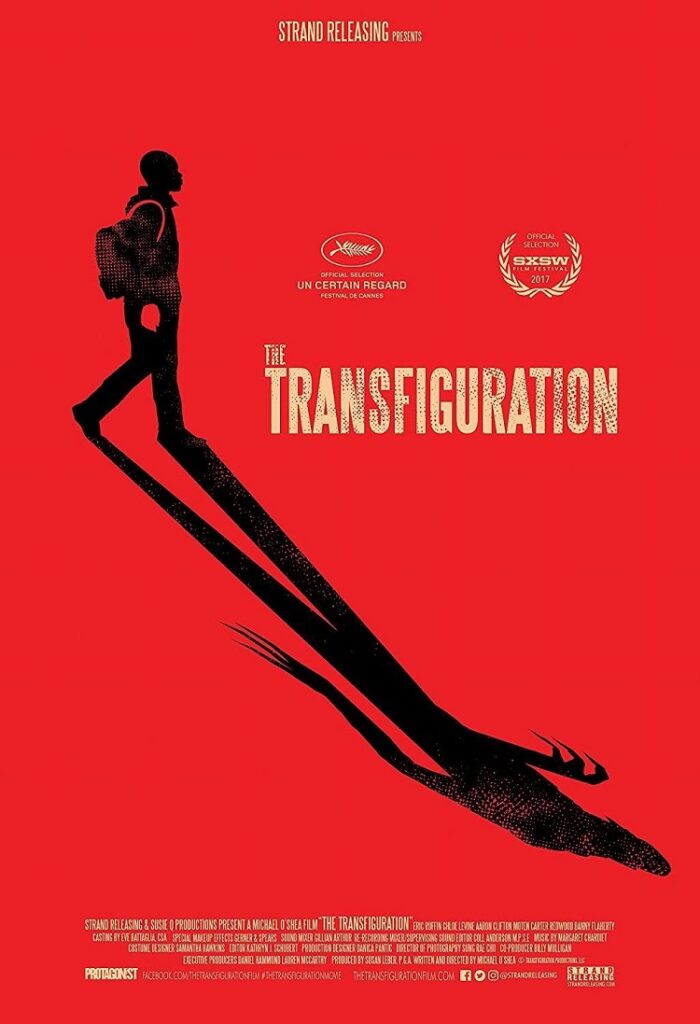
Michael O’Shea’s feature film debut, The Transfiguration, is less of a movie about an actual vampire that stalks its prey, and more of a movie about a socially awkward boy who finds his escape from reality in stories about vampires. Of course, his obsession with vampires goes beyond just talking about them and debating with his new girlfriend about how things like Twilight and True Blood are not “realistic” portrayals of the vampire lore. Granted, he hasn’t even read Twilight, he tells her, but he doesn’t think vampires would ever really sparkle. He’s essentially the crazed fanboy, while she’s the YA-obsessed newbie to the blood-sucking creatures.
If you think The Transfiguration is all about the debate between what’s considered realism in vampire stories and what’s considered fake, you would be somewhat right. There’s one scene where our protagonist Milo (Eric Ruffin) is asked by his new girlfriend Sophie (Chloe Levine) about his favorite vampire movies. That’s when Milo lets out an onslaught of some obscure pop-culture references, saying George Romero’s hard-to-find Martin is his favorite, while he also mentions Shadow of the Vampire and Let the Right One In. All of those are films he considers to be realistic vampire movies. Another scene shows Milo’s collection of VHS tapes with movies he recorded, such as The Lost Boys, Fright Night, Blade: Trinity, and Dracula Untold. Apparently, people were still recording movies to VHS when those last two were released.
The constant referencing to various vampire films becomes a bit much, and it’s pretty apparent that not only is Milo more of the Nosferatu type of fan, but so is O’Shea. It’s pretty obvious throughout that his inspiration for The Transfiguration drew from those aforementioned movies and a few others. For the most part, though, the incessant references are forgivable, because The Transfiguration is something different that fans of the genre will want to sink their teeth into.
As stated earlier, Milo is a socially awkward teenager. His housing complex is surrounded by gang members and bullies, who view Milo as a “freak.” Both of his parents are dead, and he lives with his older brother, who doesn’t get away from the television very much, but also keeps an eye on Milo and makes sure he’s staying out of danger.
Milo’s obsession with vampires has him doing a little experiment of his own. He’s at the point in his life in which self-identification becomes a major factor, and right now, he wants to live his life as a vampire. Granted, he doesn’t have actual fangs, but he does find a way to slit his victims’ throats with a miniature knife and suck their blood. He has a feeding schedule, and a diary with a certain set of rules for hunting.
Enter Sophie, a beautiful young lady who is also a bit of an outcast. She finds Milo a bit awkward, and his idea of a night in watching grotesque animal slaughtering videos is off-putting. Despite his social quirks, they form a relationship. But the one thing of which she’s not aware is his vampire lifestyle.
The Transfiguration focuses more on Milo’s coming-of-age story than it does on him killing people left and right. It’s a slow-burning indie that pays off well in the end, focusing more on how even though the rest of the world may seem to not accept you for who you are, there is at least one person out there who will. It is a horror film, too, but O’Shea doesn’t rely on cheap tricks. With a minimal score, O’Shea allows the camera and the actors to showcase the film’s most tense moments. Ruffin, who’s had some guest roles on The Good Wife and 30 Rock, proves that he can carry the film even in the quietest moments, where he might be the only person on screen. He’s certainly an actor to keep an eye on.
The DVD release of The Transfiguration only has a few special features to go along with it. We get a peek inside Milo’s journal, which the film only briefly shows. There are a few extended and deleted scenes. The biggest extended scene is the ending, which might have worked well in the final product, but I was pretty satisfied with what O’Shea went with. There’s also the film’s original theatrical trailer and some other trailers from Strand Releasing.
For a feature film debut, The Transfiguration is pretty solid. O’Shea shows us how horror doesn’t have to be about slashing and killing, but how it can also be about real-life stuff. And reality can be a whole lot scarier than any monster.